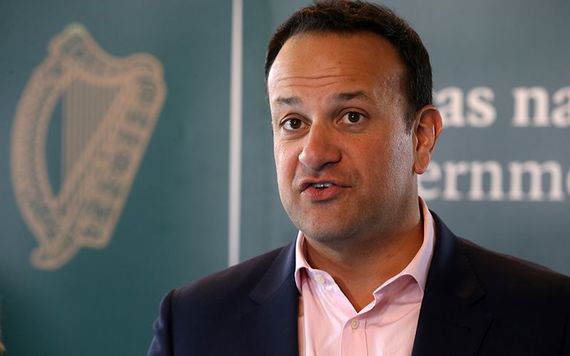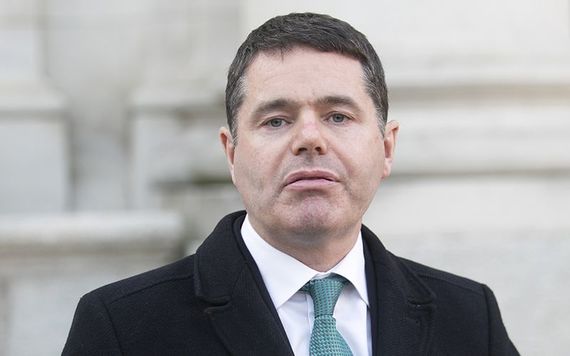The Irish government's National Broadband Plan for Ireland's scale is breathtaking but is it even possible?
Last week the government unveiled the National Broadband Plan for Ireland, and the scale of the project is truly breathtaking. The decision means that every home and business in the country will have the right to be connected to high-speed broadband.
In all but the most extreme cases, the connection will be fiber optic cable, the gold standard of broadband which even the latest wireless systems cannot match. It will not matter whether they are in remote locations, halfway up a mountain or miles down a bog road, every house, business, farm, pub, club, etc. will have a high-speed broadband connection if they want one. Not only that, but they will get it for the same cost as people who live in our cities and big towns where high-speed broadband is generally available. At present, about 75 percent of homes and businesses in the country have high-speed broadband, provided by the big telecoms companies like Eir and Vodafone. In some areas, the speeds can be unreliable at busy times, but at least it's there and mostly it works. It's the remaining 25 percent in rural areas -- half a million homes and businesses -- that this new state plan is aimed at. The reason they have not been connected up to now is that it does not make commercial sense to do so. This has caused frustration and even anger in the places left behind.
People trying to run small businesses complain it's impossible. Schools say it puts their pupils at a major disadvantage. Individual homeowners say it increases isolation and is driving young people out of rural areas. Which is why the state is now stepping in with this subsidized plan to enable all of Ireland to be connected, whatever the cost. As Taoiseach Leo Varadkar put it last week, it is a "leap of faith in believing in the future of rural Ireland." It sounds inspired, but not everyone here is convinced. The enormous cost of what is proposed means some people are saying the plan is insane rather than inspired.

Ireland's Taoiseach Leo Varadkar.
It's going to cost the state at least €3 billion which taxpayers will have to fund -- and many of them will resent that. Why should someone who chooses to live in an isolated house which will cost €5,000 to connect (the average predicted cost to connect the last five to 10 percent of remote homes) have this paid for by everyone else? The argument in favor is that from a national perspective this is democratic and fair and that fast broadband should be the right of everyone wherever they live in the country, just like an electricity connection.
More than anything else, it is argued, this could reverse the decline of rural Ireland. It will enable home working instead of lengthy commuting, it will empower local small businesses, and it will stop the drift of population to the overcrowded Dublin region. The effect on tourism is often mentioned. We have spent a lot of money recently developing and promoting the Wild Atlantic Way down the west coast of Ireland, for example.
But when tourists get to their B&Bs and hotels in the evenings in many areas in the west, they can't get on the Internet. So they can't WhatsApp their family back in the U.S., put pictures on their Instagram and so on. It's a big problem. All of that is true, and the provision of high-speed broadband everywhere in Ireland could have a transformative effect on the large areas in the country that have been left behind. But even though it's a visionary idea, it may not be the correct one from a financial point of view.
No other country in the world has done it, not even wealthy countries like the U.S. or Germany, because of the enormous cost to the state. There are other worrying aspects to the structure of the proposed plan, partly because it is a public-private partnership. This joint venture between the state and the private company which will be contracted to make the plan happen leaves the state carrying almost all the upfront cost. And in the end (after a 25-year contract period) it will be the company which will own the system infrastructure, not the state! The government's view on this is that it does not really matter because what consumers can be charged for their connection (€100 per house is the figure that was given last week) is fixed and will be the same for everyone. What matters is getting the system built and up and running. That may be true, but the deal is questionable. It's a consequence of the long delay in expanding the reach of fast broadband in the country.
That was first promised back in 2012, and different versions of it have been announced in the years since then by a succession of ministers. In the meantime, the big commercial telecoms companies connected up many rural towns, leaving only the most dispersed population areas uncovered. Making money from what's left is problematic, to say the least. That is why the state has had to come in with a subsidized plan.
And it is why three major consortiums involving the biggest telecoms companies all dropped out of the bidding process for the plan in the last couple of years. This left only one company standing, Granahan McCourt, headed by the Irish American telecoms businessman David McCourt. Given the circumstances -- since they were the only option left for the government -- it is not surprising that the company has been able to drive a hard bargain to suit themselves and their investors (they are reported to be putting up only €200 million in advance).
Time will tell how good they turn out to be at delivering, but McCourt has a strong CV in telecoms and a history of impressive international achievement. And there will be plenty of time because the completion target date is 2027. This being Ireland, there is widespread cynicism about last week's announcement, not least because it came two weeks before the local and Euro elections and Fine Gael could get a resulting broadband boost in votes in rural Ireland.
Fast broadband for the whole country has been promised several times over the past seven years and never delivered so one can understand why people are skeptical.
I'll believe it when I see it seems to be the general attitude, and the reality is that the contracts to turn this plan into reality will not be signed for months and a lot of detail is still unclear. Despite this, however, there are clear indications that this time it's serious and the project will go ahead. One of the most telling was a letter from Robert Watt, the civil servant who heads the Department of Public Expenditure.
This publicly released letter warned about the huge cost of the plan, the negative repercussions it would have in coming years on state spending in other areas like health, education and housing, and the fact that almost all the risk was being carried by the state instead of being shared with the private company. Watt strongly advised against proceeding with the plan. The Minister for Finance Paschal Donohoe, who Watt reports to, dismissed these concerns, saying that it was the job of civil servants to advise but it was the job of politicians to make decisions. Having considered all the options, he said, the government had decided that the plan was the best available and it was right to proceed rather than delay countrywide broadband even longer. Of course, it's easy to be ambitious and generous when it's taxpayers' money you are spending. Even if the aim of giving everyone in the country high-speed broadband at the same basic cost is a worthy one, there are very concerning aspects about all this.

Minister for Finance Paschal Donohoe.
Everyone is assuming that the take-up will be extremely high in rural areas, and that may not be the case. Many older people may decide they don't need it and don't want to pay for it, which would make the cost of providing it to those who do want it even higher. The structure of the plan is also concerning in that the infrastructure (fiber cabling, etc.) will be owned by the NBP company and it will charge companies like Vodafone for its use. It is those companies (providing phone, TV, and Internet) who will be billing the consumers, and they can charge whatever the competition allows. The plan envisages most of the fiber optic cabling being carried on the existing ESB Network poles (the national electricity grid), and the NBP company will pay over a million a year to the ESB for this. In many areas, some underground cabling will be necessary where electrical cables are not overhead.
In the most remote and difficult locations, it is envisaged that fiber cabling will go as far as possible and that the final stretch may be covered by wireless connection from the main mast to a small rooftop mast on the house in question. That is why the phrase fiber connection "except in the most extreme cases" was included in last week's announcement, although it was made clear that it is expected that less than one percent of homes will fall into this category. It is in this aspect where we could yet see significant changes in the way broadband is delivered if the concerns about cost force a rethink of the plan. The absolute promise to connect almost everyone by fiber optic cable is what is making it all so expensive.
The last few hundred yards to reach some houses with fiber optic cable may be too difficult and therefore absurdly expensive. If the last 10 percent or even five percent of these homes (instead of one percent) in the most isolated locations can be connected wirelessly from a nearby mast at the end of fiber optic cabling it could save hundreds of millions. We are all in favor of getting all of Ireland connected. But in doing so we have to stay connected to reality.
Read more: Ireland's government bans US anti-gay, holocaust denying pastor




Comments